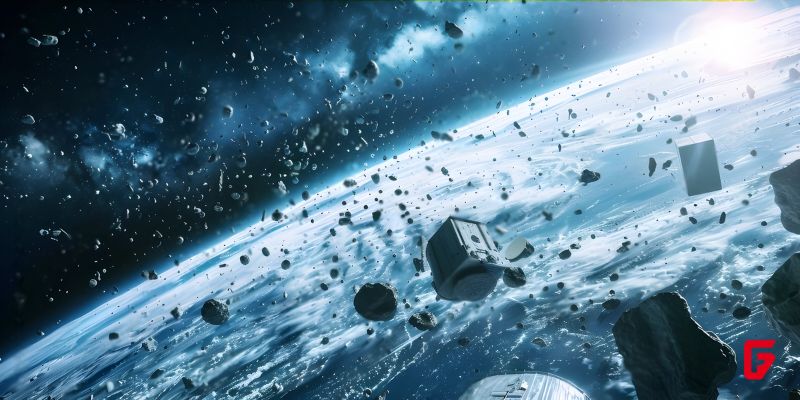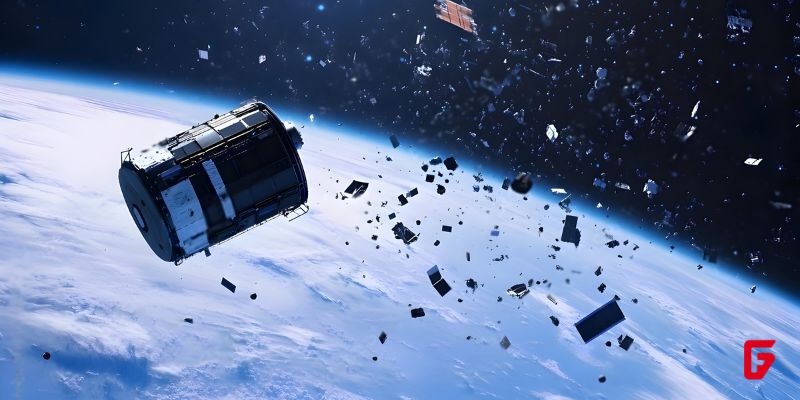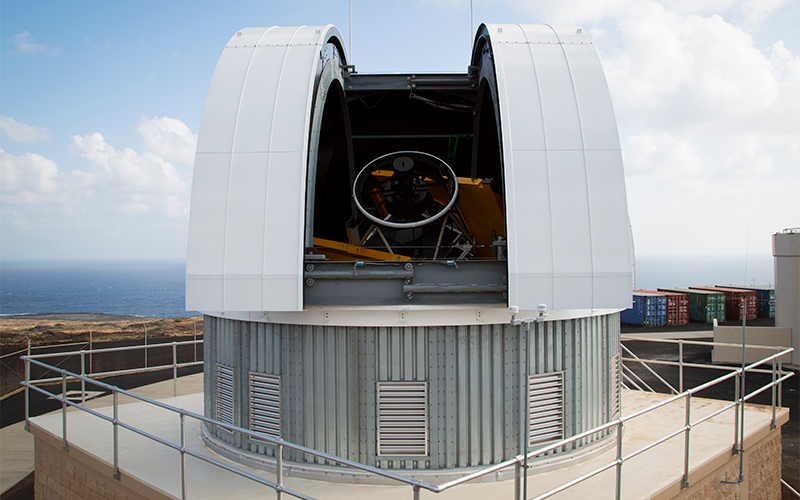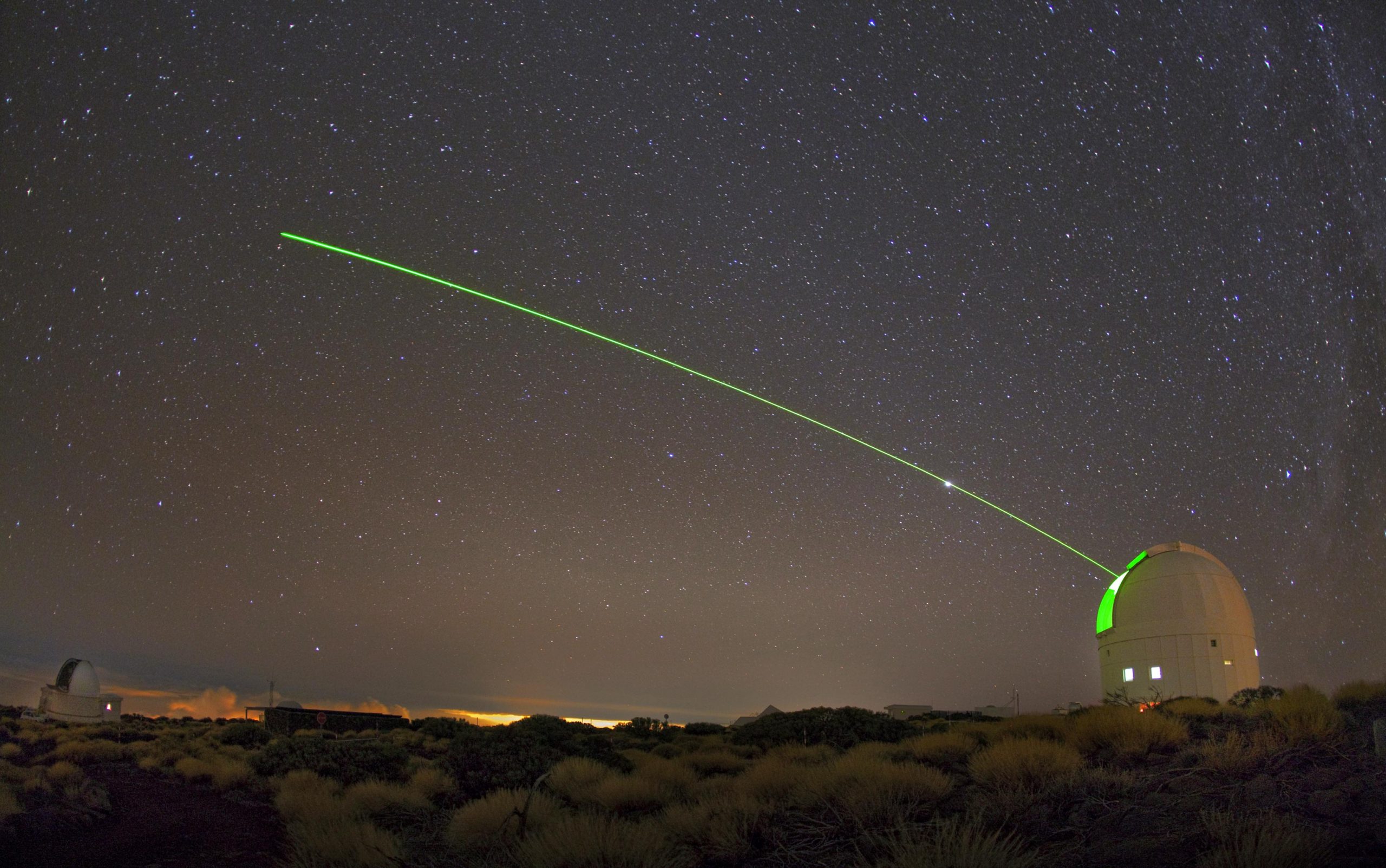By futureTEKnow | Editorial Team
Imagine a tiny screw hurtling through space at 17,500 mph. Sounds harmless, right? Wrong. This minuscule piece of space junk could obliterate a multi-million dollar satellite or endanger astronauts on the International Space Station. Welcome to the world of space debris – a growing threat to our orbital activities.
But how do we keep track of these cosmic speedsters? Enter the realm of space debris tracking technologies. From ground-based radar to cutting-edge satellite debris detection systems, we’re constantly evolving our orbital junk detection methods to safeguard our space assets. In this post, we’ll dive into the fascinating world of space debris detection and tracking. We’ll explore the latest technologies, uncover the challenges, and discover how scientists are working to keep our orbits clean and safe.
Space debris poses a significant threat to satellites and space missions. We’ll explore advanced space debris tracking technologies and orbital junk detection methods used to monitor and mitigate this growing problem.
Detecting space debris is a complex challenge that requires cutting-edge technology and innovative approaches. Space debris tracking technologies have evolved significantly in recent years, employing a variety of methods to identify and monitor the countless objects orbiting our planet.
One of the primary methods for space debris detection is the use of ground-based radar systems. These powerful radar installations emit radio waves that bounce off objects in orbit and return to Earth, allowing scientists to pinpoint the location and trajectory of debris.
Radar is particularly effective for tracking larger pieces of space junk, typically those larger than 10 cm in diameter. For smaller debris, optical telescopes play a crucial role. These advanced instruments can detect sunlight reflecting off debris particles, even those as small as 1 cm in size.
Optical tracking is most effective during twilight hours when the debris is illuminated by the sun, but the sky is dark enough for the telescopes to detect the reflected light.
Satellite debris detection has also become an essential part of the space debris monitoring toolkit. Some satellites are now equipped with sensors that can detect impacts from tiny debris particles.
These “debris sensors” provide valuable data on the density and distribution of small debris in various orbital regions.
In recent years, space agencies and private companies have been exploring more advanced space debris tracking technologies. One promising approach involves the use of lasers.
Ground-based laser systems can illuminate debris objects, making them easier to detect and track with optical telescopes. This technique, known as “laser ranging,” can provide extremely precise measurements of a debris object’s position and velocity.

Another innovative method being developed is the use of space-based detection systems. These could include dedicated satellites equipped with specialized sensors or cameras designed to detect and track debris in their vicinity.
Such systems could potentially provide more comprehensive coverage and real-time monitoring of the space debris environment.
Machine learning and artificial intelligence are also playing an increasingly important role in space debris detection. These technologies can help process the vast amounts of data collected by various sensors, improving the accuracy of debris identification and prediction of potential collisions.
As we continue to rely more heavily on satellite technology for communication, navigation, and scientific research, the importance of effective space debris detection cannot be overstated.
The development of more sophisticated space debris tracking technologies remains a critical priority for space agencies and researchers worldwide, ensuring the safety and sustainability of our activities in Earth’s orbit.
The space debris monitoring system is a complex network of technologies and processes designed to keep our orbital environment safe and sustainable. As we continue to launch more satellites and spacecraft, the need for robust space debris tracking technologies has become more critical than ever.
At its core, the space debris monitoring system combines various detection methods to create a comprehensive picture of the orbital landscape. These methods include ground-based radar, optical telescopes, and even space-based sensors.
Each plays a crucial role in satellite debris detection, offering unique advantages in tracking different sizes and types of space junk.
Ground-based radar systems form the backbone of space debris detection efforts. These powerful systems can track objects as small as a few centimeters in size, even in low Earth orbit (LEO).
The US Space Surveillance Network, for example, uses a global network of radar installations to maintain a catalog of over 23,000 orbital objects.
Optical telescopes complement radar systems by excelling at detecting debris in higher orbits, particularly in geostationary orbit (GEO). These telescopes use sophisticated imaging techniques to spot even tiny objects reflecting sunlight.
The European Space Agency’s (ESA) Space Debris Telescope in Tenerife, Spain, is a prime example of this technology in action.
Space-based sensors represent the cutting edge of space debris tracking technologies. Satellites equipped with specialized sensors can observe debris from orbit, overcoming many limitations of ground-based systems.

NASA’s Space Debris Sensor, which was installed on the International Space Station, demonstrated the potential of in-situ debris monitoring.
Data fusion is a critical component of the space debris monitoring system. Advanced algorithms combine information from various sources to create a more accurate and comprehensive debris catalog.
This fusion process helps identify potential collisions and informs satellite operators about necessary evasive maneuvers.
The space debris monitoring system also incorporates predictive modeling. By analyzing historical data and current trajectories, scientists can forecast the future positions of debris objects. This capability is crucial for long-term space mission planning and risk assessment.
Real-time monitoring is another key feature of modern space debris tracking technologies. Systems like the Space Debris Monitor (SDM) developed by JAXA use innovative techniques such as conductive strip lines to detect impacts from micro-debris in real-time.
This immediate feedback can be crucial for protecting active satellites and spacecraft.
As space activities continue to increase, the space debris monitoring system is evolving to meet new challenges. Artificial intelligence and machine learning are being integrated to improve detection accuracy and prediction capabilities.
Additionally, international cooperation is growing, with initiatives like the Inter-Agency Space Debris Coordination Committee (IADC) fostering global collaboration in space debris monitoring and mitigation.
The space debris monitoring system is more than just a collection of technologies – it’s a crucial safeguard for our space-based infrastructure.
As we continue to rely more heavily on satellites for communication, navigation, and Earth observation, the importance of effective space debris detection and tracking cannot be overstated.
It’s a testament to human ingenuity and a reminder of our responsibility to preserve the space environment for future generations.
Tracking debris in space is a complex endeavor that relies on a combination of cutting-edge space debris tracking technologies. These methods have evolved significantly over the years, driven by the urgent need to protect our valuable space assets from the growing threat of orbital junk.
Space debris detection and tracking primarily employ three main technologies: radar systems, optical telescopes, and laser ranging. Each of these methods has its strengths and limitations, and they are often used in conjunction to provide a comprehensive picture of the space debris environment.
Radar is the workhorse of space debris tracking technologies, especially for objects in Low Earth Orbit (LEO). These systems work by sending out radio waves and analyzing the reflected signals. The United States Space Surveillance Network, for instance, uses powerful radar installations to track objects as small as 10 cm in diameter.
Radar systems offer several advantages:
However, radar becomes less effective for tracking objects in higher orbits due to the exponential increase in power required to detect distant objects.
Optical telescopes play a crucial role in satellite debris detection, particularly for objects in higher orbits like Geostationary Earth Orbit (GEO). These systems use powerful cameras to capture images of space objects reflecting sunlight.

Key benefits of optical systems include:
The main drawback is that optical systems can only operate at night and are affected by cloud cover and other atmospheric conditions.
Laser ranging is an emerging technology in the field of space debris detection. This method involves firing short pulses of laser light at objects and measuring the time it takes for the light to return. Recent advancements have made it possible to use this technique on “non-cooperative” objects, including space debris.
Advantages of laser ranging include:
However, laser systems are still in the developmental stage for widespread debris tracking use.
An innovative approach to space debris tracking involves using satellites equipped with sensors to monitor debris from orbit.
These Space-Based Space Surveillance (SBSS) systems offer unique advantages:
The challenge with SBSS systems lies in the cost and complexity of launching and maintaining a constellation of tracking satellites.

An innovative approach to space debris tracking involves using satellites equipped with sensors to monitor debris from orbit.
These Space-Based Space Surveillance (SBSS) systems offer unique advantages:
The challenge with SBSS systems lies in the cost and complexity of launching and maintaining a constellation of tracking satellites.
Researchers are continually pushing the boundaries of space debris tracking technologies. One promising development comes from the University of Michigan, where scientists are working on a method to detect debris as small as 1 mm in diameter.
This technique involves identifying electric bursts produced when small debris pieces collide, creating detectable energy signatures similar to lightning.
As we continue to rely more heavily on space-based technologies, the importance of accurate and comprehensive space debris tracking cannot be overstated.
The integration of these various methods, coupled with ongoing research and development, will be crucial in ensuring the long-term sustainability and safety of our activities in space.
The sheer volume of space debris orbiting our planet is staggering, and the number of tracked objects continues to grow as space debris tracking technologies improve.
However, the reality is that we’re only scratching the surface when it comes to monitoring the vast sea of orbital junk surrounding Earth.
As of 2024, the U.S. Space Surveillance Network (SSN) is actively tracking approximately 27,000 pieces of orbital debris larger than 10 centimeters. This might seem like a significant number, but it represents just a fraction of the total space debris population.
The European Space Agency (ESA) estimates that there are about 36,500 objects larger than 10 cm, roughly a million objects between 1 cm to 10 cm, and a staggering 130 million objects from 1 mm to 1 cm orbiting our planet.
Let’s break down these numbers to understand the scale of the problem:
These are the easiest to track and pose the most significant immediate threat to operational satellites and spacecraft. Current space debris detection systems can monitor these objects with relative accuracy.
The discrepancy between the SSN’s tracked objects (27,000) and ESA’s estimate (36,500) likely comes from different tracking capabilities and methodologies.
This category presents a significant challenge for satellite debris detection. While these objects are large enough to cause catastrophic damage to spacecraft, they’re small enough to evade many current tracking systems.
The estimated one million objects in this size range highlight the urgent need for more advanced space debris tracking technologies.
The vast majority of space debris falls into this category, with an estimated 130 million pieces. These tiny fragments are nearly impossible to track with current technology, yet they still pose a threat due to their high velocity.
The development of new space debris detection methods, like the University of Michigan’s electric burst detection system, aims to address this critical gap in our tracking capabilities.
It’s important to note that these numbers are constantly changing. Space agencies and private companies launch new satellites regularly, adding to the potential debris field.
Additionally, collisions between existing debris can create thousands of new fragments in an instant, a phenomenon known as the Kessler Syndrome.
The challenge of tracking space debris is further complicated by several factors:
To address these challenges, space agencies and private companies are investing heavily in improving space debris tracking technologies. Some promising developments include:
As we continue to rely more heavily on space-based technologies for communication, navigation, and scientific research, the importance of comprehensive space debris tracking cannot be overstated.
While we’ve made significant progress in tracking larger objects, the vast majority of space debris remains undetected and unmonitored.

Advancing our space debris detection and satellite debris detection capabilities is crucial for the long-term sustainability of our activities in space and the protection of our valuable orbital assets.
Optical detection is a crucial component of space debris tracking technologies, offering unique advantages in the quest to monitor and catalog orbital debris. This method relies on sophisticated telescopes and imaging systems to capture the faint light reflected by space debris as it orbits Earth.
Let’s dive into the intricacies of optical space debris detection and explore how it complements other satellite debris detection techniques.
At its core, optical space debris detection involves using ground-based or space-based telescopes to observe and photograph areas of the sky. These systems are designed to detect the sunlight reflected off debris objects as they pass through the telescope’s field of view.
The process is similar to how we observe stars and planets, but with some key differences due to the nature of space debris.
Ground-Based Optical Systems

Ground-based optical systems form the backbone of many space debris detection efforts. These systems typically consist of:
One of the primary advantages of ground-based systems is their relatively low cost compared to space-based alternatives. They can also be easily upgraded and maintained.
Space-Based Optical Systems
While less common, space-based optical systems offer some unique benefits for space debris detection:
However, space-based systems are significantly more expensive to deploy and maintain.
Advanced Imaging Techniques
Modern space debris detection systems employ several advanced imaging techniques to enhance their capabilities:
Challenges in Optical Detection
Despite its advantages, optical space debris detection faces several challenges:
Future Developments
The field of optical space debris detection is rapidly evolving. Some exciting developments include:
Optical detection plays a vital role in our space debris tracking technologies. While it has its limitations, when combined with radar and other detection methods, it forms a comprehensive system for monitoring the ever-growing population of orbital debris.
The space debris 5 year rule is a groundbreaking regulation adopted by the Federal Communications Commission (FCC) in September 2022, aimed at mitigating the growing problem of orbital debris in Low Earth Orbit (LEO).
This rule represents a significant shift in space debris management policies and has far-reaching implications for satellite operators and the future of space exploration.
Basically, the 5 year rule requires satellite operators in LEO to deorbit their satellites within five years of completing their missions, a dramatic reduction from the previous 25-year guideline.
This change reflects the urgent need to address the rapidly increasing amount of space debris, which poses a significant threat to active satellites, space stations, and future space missions.
Key aspects of the 5 year rule:
The FCC’s decision to implement this rule stems from the recognition that the space environment has changed dramatically since the 25-year guideline was established.
With the rapid growth of the commercial space industry and the deployment of large satellite constellations, the risk of collisions and the generation of new debris has increased significantly.
Implications for the space industry:
While the 5 year rule has been widely supported within the space community, it’s not without controversy. Some industry players and lawmakers have expressed concerns about the FCC’s authority to regulate orbital debris and the potential for conflicting guidelines with other U.S. agencies.
Moreover, the recent Supreme Court ruling on Chevron deference has raised questions about the FCC’s legal standing to enforce such regulations. This uncertainty highlights the need for clear legislative action to establish unambiguous authority for space debris regulation.
The space industry continues to evolve and the 5 year rule represents a crucial step towards ensuring the long-term sustainability of orbital operations.
It underscores the growing importance of space debris tracking technologies and satellite debris detection methods in maintaining a safe and productive space environment.
The implementation of this rule will likely accelerate the development and deployment of more advanced space debris detection and tracking systems. These technologies will be essential for compliance verification and for maintaining an up-to-date understanding of the orbital debris environment.
As we move forward, the space debris 5 year rule serves as a reminder of the delicate balance between technological progress and environmental stewardship in space. It challenges the industry to innovate responsibly and sets a new standard for space sustainability in the 21st century.
The world of space debris tracking and detection technologies is so fascinating, but it’s clear that the challenge of keeping our orbital environment safe is both complex and crucial.
Space activities are on a full rise, and so is the urgency to improve our tracking capabilities. The ability to detect and track smaller debris particles remains a critical frontier. Innovations like the University of Michigan’s electric burst detection method show promise in pushing the boundaries of what we can monitor.
The challenge of space debris is a testament to human ingenuity – we created this problem through our space endeavors, and now we’re developing cutting-edge solutions to address it.
Founded in 2018, futureTEKnow is a global database dedicated to capturing the world’s most innovative companies utilizing emerging technologies across five key sectors: Artificial Intelligence (AI), immersive technologies (MR, AR, VR), blockchain, robotics, and the space industry. Initially launched as a social media platform to share technology news, futureTEKnow quickly evolved into a comprehensive resource hub, spotlighting the latest advancements and groundbreaking startups shaping the future of tech.
Editors Pick
Don't Forget
To Read